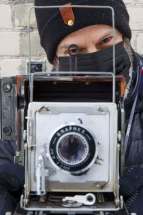Vintage views Armed with decades-old cameras & expired film, local photographer explores city
Read this article for free:
or
Already have an account? Log in here »
To continue reading, please subscribe:
Monthly Digital Subscription
$0 for the first 4 weeks*
- Enjoy unlimited reading on winnipegfreepress.com
- Read the E-Edition, our digital replica newspaper
- Access News Break, our award-winning app
- Play interactive puzzles
*No charge for 4 weeks then price increases to the regular rate of $19.00 plus GST every four weeks. Offer available to new and qualified returning subscribers only. Cancel any time.
Monthly Digital Subscription
$4.75/week*
- Enjoy unlimited reading on winnipegfreepress.com
- Read the E-Edition, our digital replica newspaper
- Access News Break, our award-winning app
- Play interactive puzzles
*Billed as $19 plus GST every four weeks. Cancel any time.
To continue reading, please subscribe:
Add Free Press access to your Brandon Sun subscription for only an additional
$1 for the first 4 weeks*
*Your next subscription payment will increase by $1.00 and you will be charged $16.99 plus GST for four weeks. After four weeks, your payment will increase to $23.99 plus GST every four weeks.
Read unlimited articles for free today:
or
Already have an account? Log in here »
Hey there, time traveller!
This article was published 08/02/2021 (1768 days ago), so information in it may no longer be current.
Keith Levit arrived at the corner of Princess Street and Alexander Avenue holding a piece of history in his hands: a Graflex Crown Graphic four-by-five camera. Covered with the patina that comes with over 70 years of existence, its body oxidized a soft burgundy, it looks like it belongs on a shelf, not on a street corner in the bitter Winnipeg cold.

For a while, that’s exactly where it sat: on a shelf, in Levit’s enviable collection of 100 vintage cameras, acquired in antique shops around the world and displayed lovingly as relics, rather than pieces of technology that served a direct purpose other than aesthetic. Some dated back more than a century, with rudimentary materials and an appearance that recalled an era few alive can remember.
Though he started shooting film in 1974 with a silver and black Ricohflex Model VI, the digital revolution came and stayed, and the vintage cameras — beautiful as they were — were relegated to shelf duty.
“I didn’t care if they worked. I mostly cared if they looked good,” says Levit, who acquired the Crown Graphic in a Havana coffee shop for US$75 after spotting it on vacation a few years ago. The shop owner threw in a box of cigars for good measure.
A new trend developing?
Across the city, people are digging up their old film cameras from closets full of junk and showing up at Don’s Photo, wondering if they can still use them, says James Wall, the assistant manager of the Portage Avenue store.
Across the city, people are digging up their old film cameras from closets full of junk and showing up at Don’s Photo, wondering if they can still use them, says James Wall, the assistant manager of the Portage Avenue store.
Wall says few have had cameras as old as Levit’s, but many find models from the 1970s and 1980s, and are looking to get some nostalgic fun out on the street or in the forest.
“A lot of younger people are grabbing their grandparents’ cameras,” he says. “A lot of hand-me-downs.”
Wall says that you don’t need to be a seasoned professional to develop your own film at home, though experience helps. He says Don’s has sold more home developing and chemistry kits, notably one made by the American company Cinestill, than ever before over the pandemic. Ditto for developing tanks.
“I’ve sold more the past few months than the past few years,” he says.
Black-and-white film developing chemicals sales are up five times, he estimates, while colour is “almost 100 per cent more.” Cinestill, the company that makes the most popular kit at Don’s, started selling the colour kit shortly before the pandemic started, hence the sharp uptick, Wall says.
But then the pandemic hit, and Levit, a professional photographer since the 1980s, looked at the cameras in a new light. He started cleaning them, repairing them as needed, labelling them, researching them, trying to recall exactly where they came from.
There were those he used before digital: the Ricohflex, the 1977 Nikkormat he got as a high-school graduation gift and a Hasselblad purchased in 1984. There were Soviet models manufactured in the Communist era — KIEVs and Moskvas — found in St. Petersburg, Russia, and several Kodaks — Juniors and Jiffys and different models of the Brownie — dating back as far as 1915. A 1939 Welta with a Stelo lens, his wife Linda’s grandmother’s camera. Several press cameras formerly belonging to legendary Winnipeg photographer Barney Charach, given to Levit after Charach’s death in 2013.
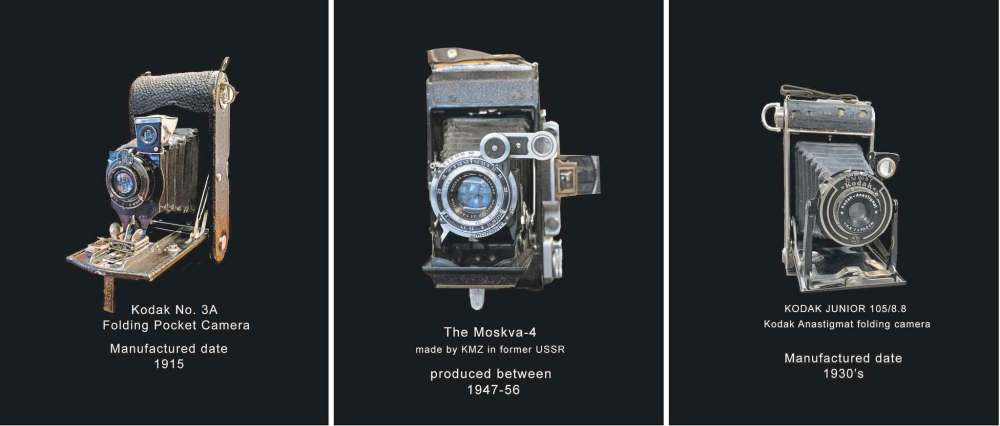
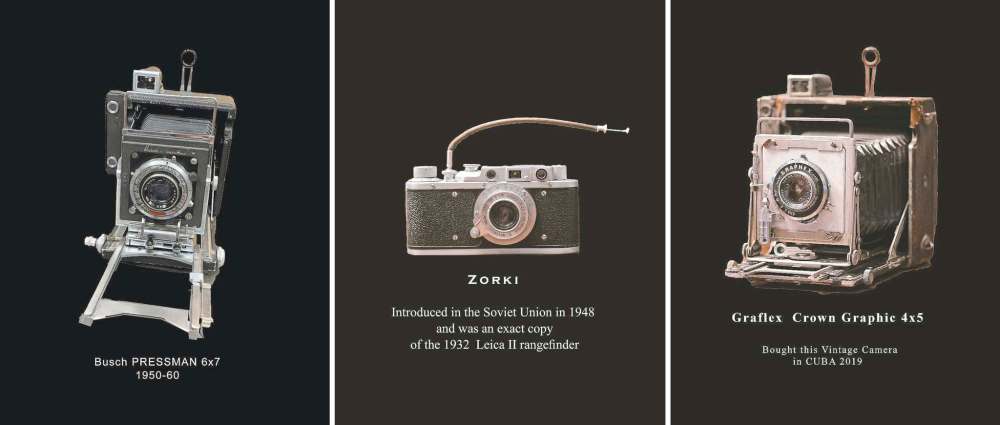
Slowly, Levit came around to what seemed like a crazy idea: what if these cameras worked? He’d never checked before, but now, with nothing to do and nowhere to go but Winnipeg, it seemed like a good time to find out.
That also meant creating a home darkroom for the first time since he switched to digital and relearning the developing process. In Charach’s collection were about 100 rolls of expired film, and Levit had several in the downstairs freezer. Part of the challenge was getting 20-year-old film to fit in 80-year-old cameras

He went into Don’s Photo on Portage Avenue, telling the employees there of his plan and buying a home chemistry set suitable for developing black-and-white and colour film.
“I started processing,” he says. “And I was hooked.”
Soon, he was gallivanting around the Exchange District carrying the Ricohflex his dad let him use in 1974. Snapping photos of True North Square’s curvature and Transit buses with a Busch Pressman six-by-seven camera that was manufactured when the city still had streetcars. The Kodak No. 3A folding pocket camera, manufactured in 1915, was toted along for a trip to Assiniboine Park. Linda’s grandmother’s Welta was in Levit’s hands on the frozen river. He didn’t drop it.
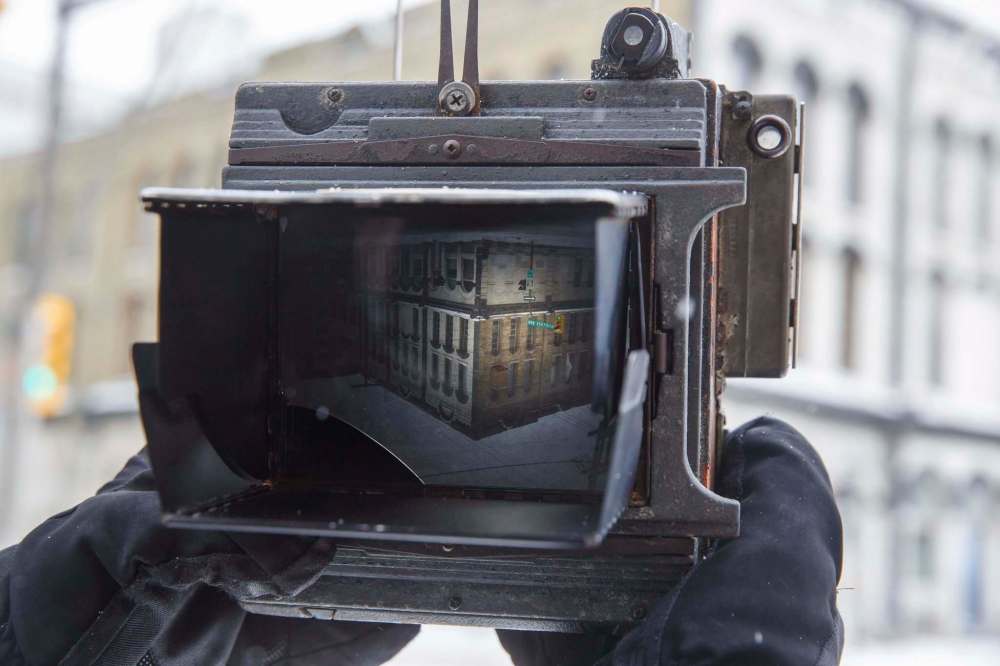
Then the processing. Until he gets into the darkroom, Levit has no clue whether anything worked. The film could be aged beyond use. The camera could have an invisible flaw. Maybe they should have stayed on the shelf?
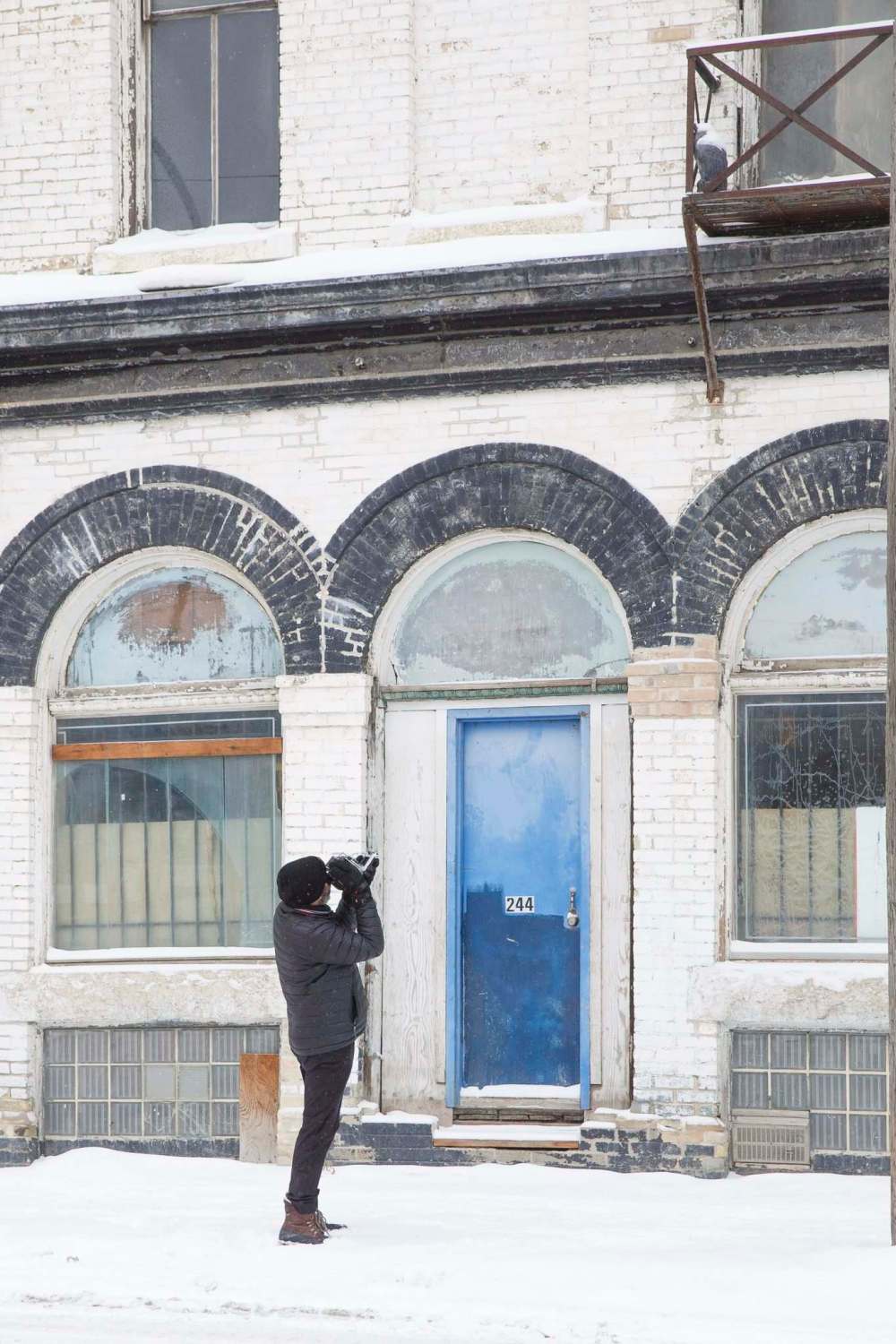
When the processing is done, “my heart starts pounding,” says Levit. Who knows if it was all for naught?
It wasn’t, though there were some duds, and Levit soon took his shots to the Manitoba Camera Club, the country’s oldest, to share his work and see what others were coming up with as part of the club’s daily photo challenge.
“I was absolutely amazed by it,” says Viola Davidson, a member of the Manitoba Camera Club who started taking photos when she was a 19-year-old nursing student. “I hear people say all the time, ‘I’ve got these old film cameras, what can I do with them?’ Here’s something.”

The results of Levit’s experiment were inspiring to Davidson and others. Most photos taken today are on smartphones, and with good reason: they’re economical, democratized, fit for use by amateurs and professionals alike, and have virtually unlimited storage. But here was an example of the painstaking effort once required to capture a moment, the focus, and the risk and potential to come up short, something somewhat lost in the era of Instagram.
At the same time, the proof the old cameras still could serve their intended purpose carries a message: dust and rust may accrue, but what’s old still has value and utility. And while pleasure travel to foreign lands — of which Levit has been to dozens — is not just disallowed, but unethical and dangerous, it’s still possible to take a trip without leaving the city perimeter.
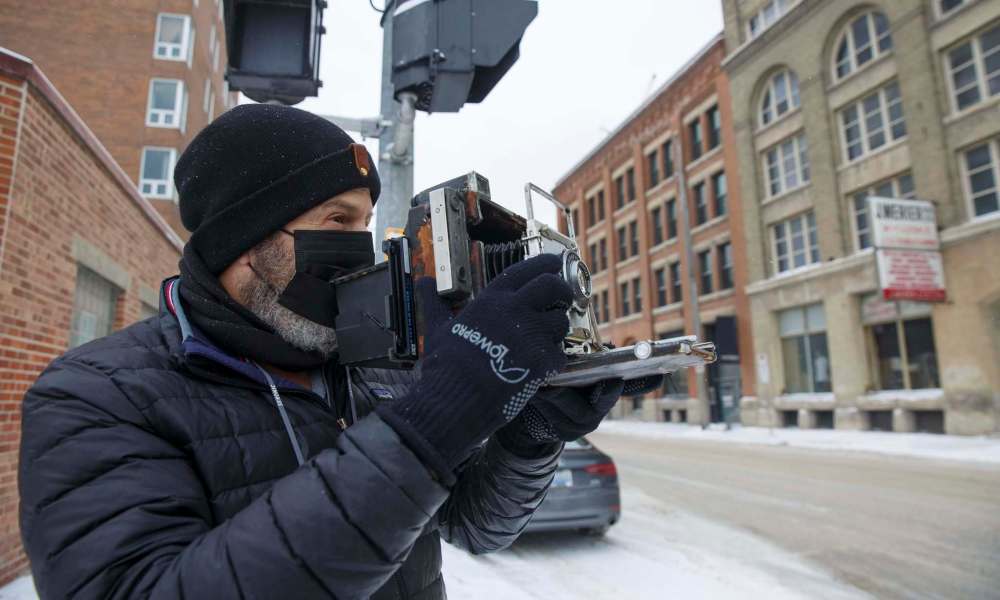
The trip can occur in a geographic sense, but also in a chronological one: nostalgia’s draw is especially strong when one’s left with no choice but to explore what they’ve already seen.
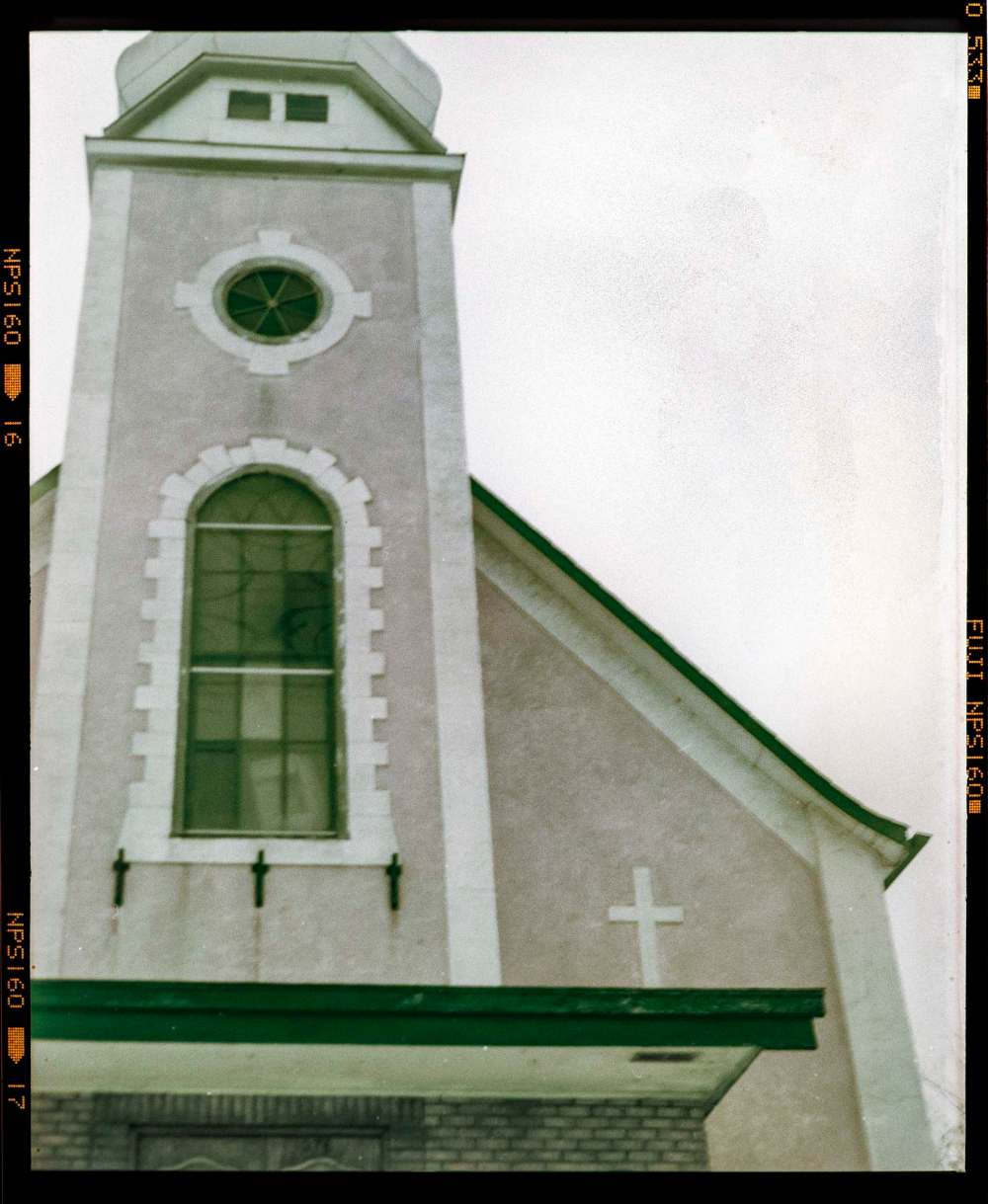
“I find beauty in my backyard, and Winnipeg is a huge backyard, with buildings and nature and people,” Levit says. “I’ve been exploring the last few months more than I had in the last few years. I always realized what was around me,” he said. He just had never looked at it through a 100-year-old lens.
On Princess Street, Levit clutches the Graflex, hoists it up and points it toward an old building, the Bathgate Block, built in 1883. It looks ancient, as hybrid cars and giant trucks drive by, but it really isn’t. It’s 77 years older than Levit, probably 50 years older than the camera he’s holding.

How many times has this building been photographed? How many times has it been driven past by horses and Model Ts and electric bikes? How many people have walked in and out in 138 years and felt the rush of a Winnipeg winter greet their cheeks with a harsh kiss?
Who knows? But it’s a safe bet it’s only been shot by a camera this old, on this day in the year 2021, once. Will the film work or will it be a dud? Who knows?
ben.waldman@freepress.mb.ca

Ben Waldman covers a little bit of everything for the Free Press.
Our newsroom depends on a growing audience of readers to power our journalism. If you are not a paid reader, please consider becoming a subscriber.
Our newsroom depends on its audience of readers to power our journalism. Thank you for your support.
History
Updated on Tuesday, February 9, 2021 8:54 AM CST: Adds share image
Updated on Tuesday, February 9, 2021 9:11 AM CST: Minor copy editing changes







